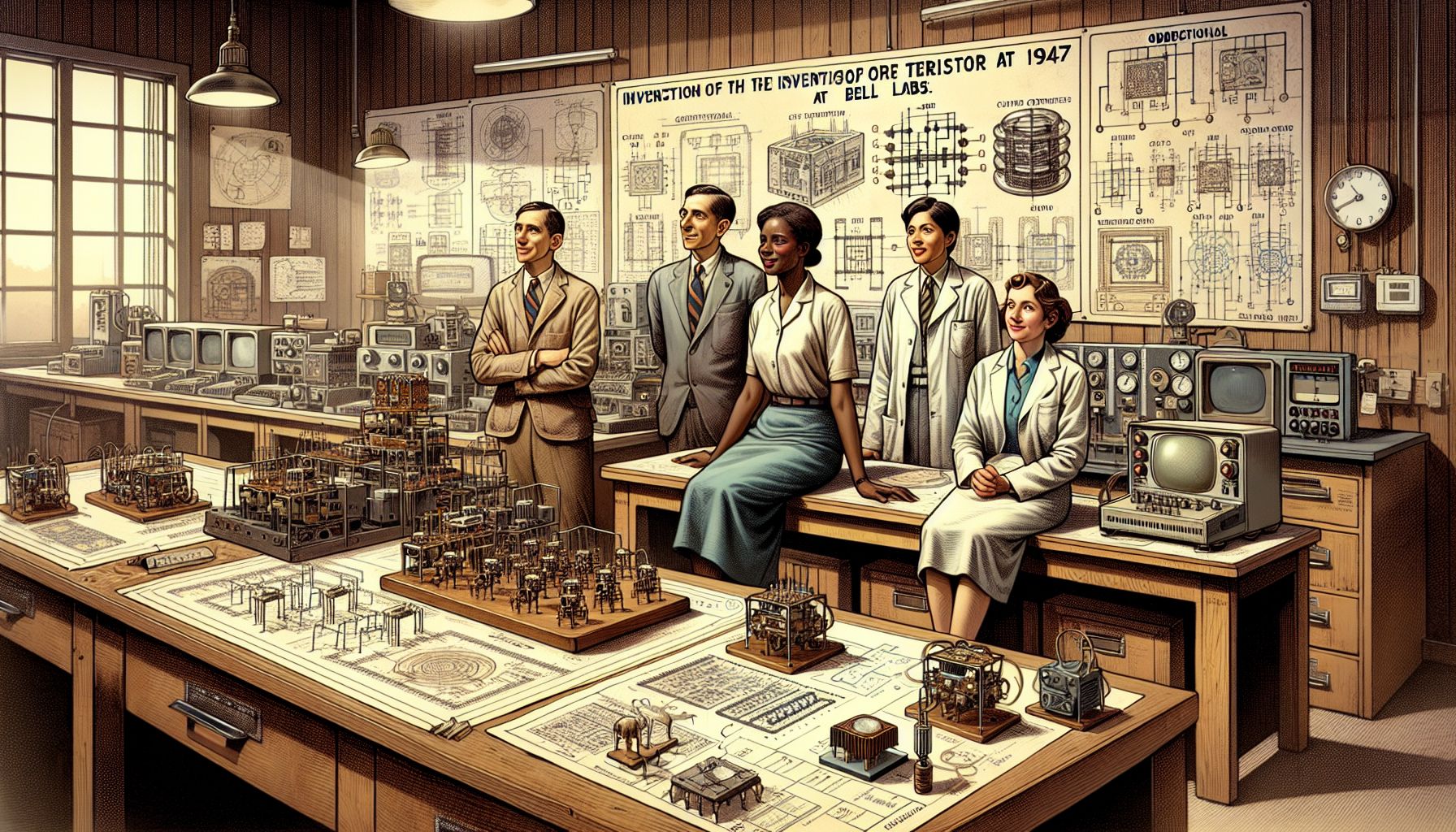📌 Let’s explore the topic in depth and see what insights we can uncover.
⚡ Before the sleek smartphones and ultra-thin laptops, there was a tiny, unsung hero that sparked the digital revolution: the transistor! Discover the gripping story of this game-changing invention at Bell Labs in 1947 that altered the course of technology forever.
There’s no denying that the 20th century was a period of massive technological advancements. Among these inventions, one that stands out for its profound impact on the world of electronics is the transistor. Invented in 1947 at AT&T’s Bell Laboratories, the transistor is often celebrated as the greatest invention of the 20th century. Today, we’ll dive deep into the fascinating history of this groundbreaking innovation and its transformative impact on our digital lives. The transistor’s story is one of ingenuity, persistence, and a little bit of serendipity. This tiny device, no larger than a grain of rice, revolutionized the world of electronics and laid the foundation for the information age. Join us as we journey back in time to the bustling labs of Bell in the late 1940s, where three brilliant scientists made a discovery that changed the world.
🧪 The Birthplace of Innovation: Bell Labs

Unveiling the Birth of Transistor at Bell Labs, 1947
AT&T’s Bell Laboratories, often simply referred to as Bell Labs, was a hotbed of innovation in the mid-20th century. Located in Murray Hill, New Jersey, the institution was responsible for countless technological breakthroughs, many of which still influence our everyday lives. Bell Labs was a dreamland for tech enthusiasts, providing fertile ground for revolutionary ideas. It was here, in the year 1947, that three scientists — John Bardeen, Walter Brattain, and William Shockley — would make a discovery that would forever change the course of technology.
💡 The Invention of the Transistor
Before the invention of the transistor, the world of electronics was dominated by the vacuum tube. These devices were large, expensive, consumed a lot of power, and often failed due to overheating. The need for a smaller, more reliable and efficient device was apparent. The trio at Bell Labs, driven by a shared vision of a more efficient electronic world, began their pursuit of a solution. After numerous trials and errors, they finally hit upon a design that worked, giving birth to the first point-contact transistor. The transistor, unlike the vacuum tube, was a solid-state device. It was small, cheap, durable, and used significantly less energy, making it the perfect ingredient for the burgeoning field of electronics. This marked a paradigm shift in the way electronic devices were designed and manufactured, paving the way for a new era of miniaturization.
🎖 The Nobel Prize Recognition
The revolutionary impact of the transistor was recognized with the highest honor in the field of science. In 1956, Bardeen, Brattain, and Shockley were awarded the Nobel Prize in Physics for their groundbreaking research and development of the transistor. Their invention had not only revolutionized the field of electronics but had also paved the way for the development of modern computing. The three scientists stood as a testament to the power of innovation and collaboration, their legacy forever etched in the annals of science history.
🌐 The Transistor in the Modern World
Today, the transistor is an integral part of our everyday lives, though we may not always realize it. From smartphones and laptops to televisions and digital watches, transistors are the building blocks of virtually all modern electronic devices. Modern transistors are incredibly small – billions can fit on a single microchip. This miniaturization has allowed for the creation of increasingly powerful and compact devices, opening up a world of possibilities in technology. If Bell Labs were considered the heart of innovation, then the transistor was its most vital beat. It’s safe to say that without the transistor, we wouldn’t have the sophisticated tech-driven world we live in today.
🧭 Conclusion
The invention of the transistor at Bell Labs in 1947 was a turning point in the history of technology. This tiny device, born out of the collaborative efforts of three brilliant scientists, revolutionized the world of electronics and paved the way for the digital age. The story of the transistor is a powerful reminder that the greatest innovations often come from a place of persistence, collaboration, and a desire to challenge the status quo. So the next time you pick up your smartphone or sit down at your computer, take a moment to appreciate the tiny transistors working tirelessly behind the scenes. After all, these little miracles of technology are the unsung heroes that power our digital world. 🌍📱💻
🤖 Stay tuned as we decode the future of innovation!
